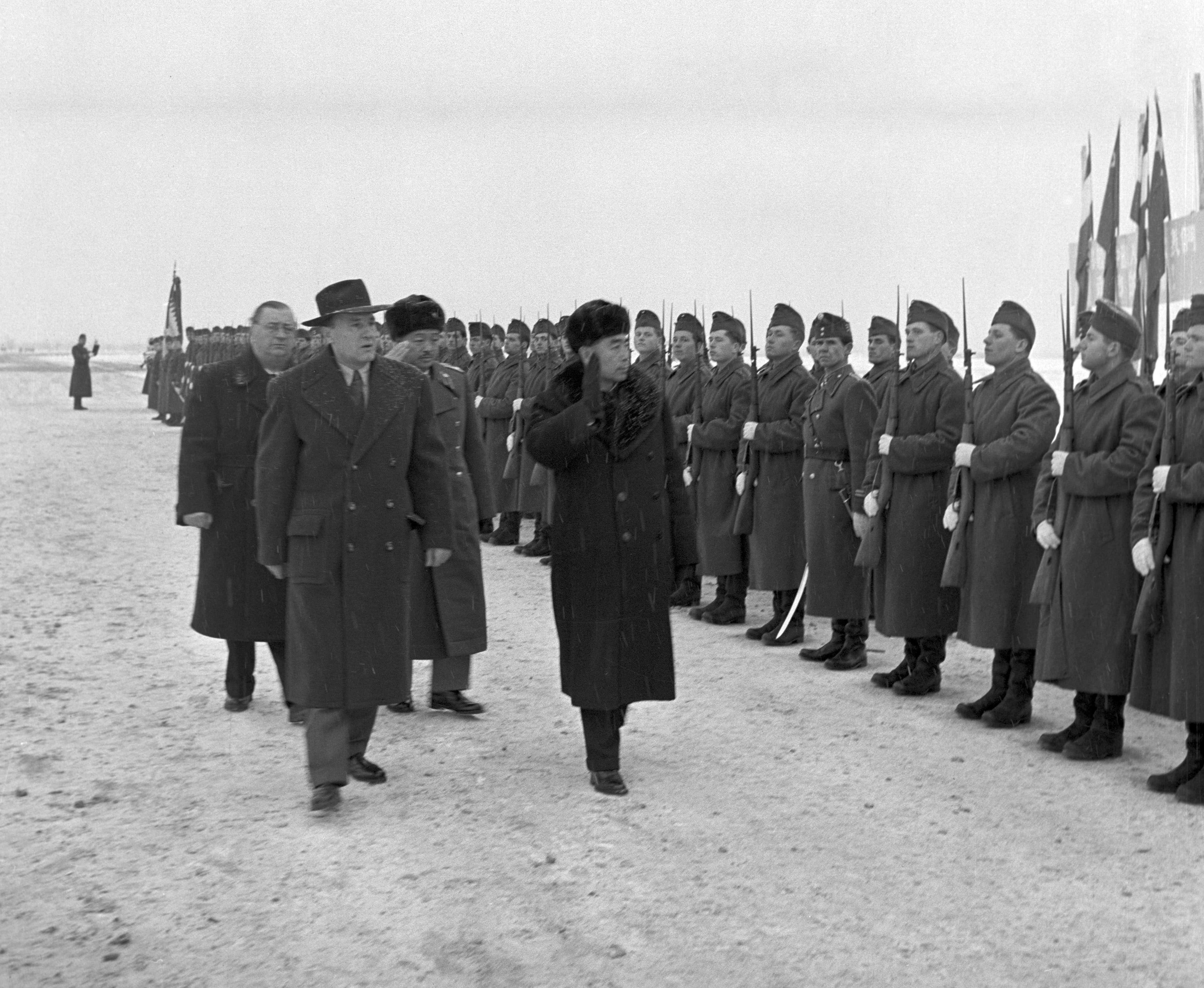
The New China, the People's Republic of China, was established on 1 October 1949. On 4 October, Hungary was one of the first countries to send a letter of congratulations to the Chinese head of state and to initiate the establishment of diplomatic relations. The reply was received on 6 October, so we count Hungarian-Chinese diplomatic relations from 6 October 1949.

1949-1990 - Soviet-influenced relations
The years between 1949 and 1956 were characterised by getting to know each other, with a substantial change from 1956, when Chinese Vice President Zhu De and his delegation, including the father of the current head of state, Xi Zhongxun, visited Hungary. In January 1957, Prime Minister Zhou Enlai arrived in Hungary, and in the same year, Chinese PM János Kádár paid an official visit to China. Between 1956 and 1960, a close friendship developed between the two countries and economic cooperation intensified.
By the 1960s, relations between China and the Soviet Union had deteriorated and this had an impact on the Eastern European bloc. The estrangement was also aggravated by the Chinese Cultural Revolution.
In the summer of 1984, Deputy Prime Minister József Marjai visited China - the first time since the 1950s that a Hungarian deputy prime minister had paid a visit to Beijing. In June 1987, Prime Minister and Acting General Secretary Zhao Ziyang visited Hungary on his tour of Eastern Europe, and János Kádár, General Secretary of Hungary's ruling MSZMP, also visited Beijing in October 1987 for the first time in 30 years.

1990-2000 - Protocol relations
Following the break-up of the Soviet Union, Hungary's focus shifted to Western economic integration, but relations with China were maintained: in 1994, President Árpád Göncz visited China, followed by the visit of President and General Secretary Jiang Zemin in 1995.
2000-2010 - The rise of Hungarian-Chinese relations
The new phase in the relationship between the two countries started in 2003, when Prime Minister Péter Medgyessy paid an official visit to Beijing and in the same year Hungary was granted the Chinese Approved Destination Status, allowing Chinese tourists to visit Hungary. A year later, a direct flight between Budapest and Beijing was launched.
In 2004, the Hungarian Consulate in Shanghai was reopened, and the Hungarian-Chinese Bilingual Primary School in Budapest was founded. In February 2003, during a visit by the President of the Bank of China, Liu Mingkang, the Bank of China's representative office in Budapest, which had been opened in 1997, was officially designated Hungarian branch office. Cultural relations have also flourished, including the opening of the ELTE Confucius Institute in Budapest in 2006.

2010-2017 - Eastern opening
The expanding Hungarian-Chinese relations reached a new level in 2010, when Prime Minister Viktor Orbán announced the "Eastern opening" policy and increasingly close ties were established with Eastern countries in all fields.

2017 to present - Golden Age
Economic ties have been steadily expanding, but it was the signing of the comprehensive strategic partnership in 2017 that really saw a surge in trade and investment between the two countries. Major Chinese companies are now investing in Hungary, which is a significant contributor to the development of the Hungarian economy.
And the visit of the Chinese leader in May and then Prime Minister Viktor Orbán in July was a fitting celebration of the 75th anniversary of Hungarian-Chinese diplomatic relations in the Year of the Dragon.
The author is Hungary's former Consul General in Shanghai and Director of the Eurasia Center